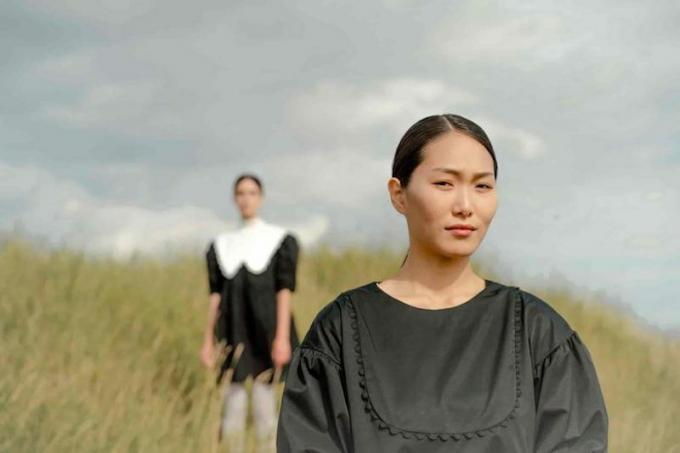First/Second/Third Person Point of View and Examples
Loading...
The third person point of view seems to position the author as someone who knows everything that happens in the story. Point of view is the way the writer puts himself in a story.
This will be closely related to the view of the presentation of characters, events, and settings to the reader. These components make a different feel in the storyline that is presented. Point of view makes it easier for readers to understand the author's intent in a work.
List of contents
Definition of Point of View

Point of view, also known as point of view, is an element that cannot be left behind in building a story. The storyline will feel different because of this element.
Point of view can also be said as the author's way of placing himself in the story. This is one of the elements of the success of fiction. The author transforms his vision into the views of the characters in the story.
This is what makes the story interesting to listen to. Before writing a story, the writer needs to determine the point of view that will be used in the work.
Point of view provides clarity to the story line and the events depicted. With a point of view, writers can position themselves more easily when creating a story.
Read: Example of Folklore Text
Kinds of Point of View

There are several kinds of point of view. Each type has a different point of view in the story. Here's the information.
1. First Person Point of View (POV 1)
This kind of point of view will tell yourself or the story experienced by the author. And this point of view, using the word I as the main role.
When using this point of view, it usually creates a feeling as if the reader is participating in experiencing something similar to the main character in the story. My main character is the center of the story.
2. Second Person Point of View (POV 2)
This point of view generally uses you as the main character. However, the use of this point of view is quite rare in fiction.
This type of second person point of view is more commonly found in works such as articles because they generally use the greeting words you or you.
3. Third Person Point of View (POV 3)
The third person point of view makes the author position himself as the person who knows best about everything in the whole story.
Generally, the author will use the name of the character and several other characters when using this kind of point of view. This type of abstinence angle is divided into two types as follows.
a. POV 3 All-knowing
This type of point of view describes the author's knowledge of what happened to the characters in the story. His knowledge is very detailed so that the author can clearly know what the thoughts are until the day the characters are depicted.
b. POV 3 Limited
In this type of point of view, the writer knows various things that happen to the characters in a story.
Advertisement
But can't find out in detail. What is disclosed and known by the author is only based on observations made.
Read: Example of Fiction Story Text
First Person Point of View and Examples

This type of point of view has two types that are able to give a different feel to the story. Check out the following information.
1. Single
In this point of view, the writer will act as the main character and the storyteller, the pronoun that is generally used is me. As the main character, the author will tell his own story.
But if I'm not the main character, but I still have a relationship with the main character. This point of view will tell me as a friend or witness who knows the events experienced by the main character.
Example:
I often see him go to the Kasih orphanage. When he got there he brought some study equipment to food. He looks very cheerful and always throws a warm smile to those around him.
2. Plural
The concept of plural first point of view is not much different from singular, it's just that it uses a different pronoun, namely us. The author will be someone who tells a story representing a group that has experienced an incident. The author is one of the people in the group.
Example:
On Monday we will gather to discuss plans for departure to Japan, starting from the time of departure, the tours visited, to where to stay.
Read: Example of Historical Story Text
Second Person Point of View and Examples

When using this type of point of view, the author will use the word you to describe a character. Indirectly, the reader will be placed as the main character and become attached to the storyline. The author will describe what you do. Besides you, other pronouns that are often used are you or you.
Example:
Today is your first day at work. All preparations must be done properly. Don't let anything be left behind. Don't forget to keep a warm smile even though you're tired to keep your spirits up.
Third Person Point of View and Examples

The third person point of view places the author only as a narrator. When telling a story, the writer will use the third pronoun like he or she.
In this point of view, the writer seems to be outside the story and tells the story of the main character to the readers. Check out some of the following types.
1. Objective (observer figure)
The objective point of view puts the writer outside the character and acts as a narrator who does not know the main character's heart or mind. This type of point of view is generally used when the author wants to create a mysterious story that makes the readers curious.
Example:
Hana reads a message. He doesn't like what he reads. Tomorrow, he decides to meet Gani and decides to talk to him directly. He felt very angry and offended.
2. Mixture
This point of view modifies the objective point of view with something that allows the reader to guess what the main character is telling the story.
It can be said that this point of view provides a vague picture so that the reader can participate in thinking about the conditions or events experienced by the main character.
Example:
Nana was surprised by the message she received. Maybe he felt sad because he didn't expect the message to be sent by Amir. Nana thinks she will meet her ex-boyfriend tomorrow morning.
3. all you know
In this point of view, the writer has knowledge of the main character's mind and heart. The author reveals what happened and the condition of the main character. The author becomes an all-knowing person regarding the events and feelings felt by the main character.
Example:
Mira met Gusli who looked thin and unkempt. He approaches her and thinks that his ex-girlfriend looks really pitiful now. Slowly, the stored anger began to fade within Mira.
The third person point of view is often used in depicting characters or storytelling. Apart from that, there are also first and second points of view. The author can determine for himself what kind of point of view he wants to be presented in his work so that readers can enjoy it.
X CLOSE
Advertisements
ADVERTISEMENT
X CLOSE
